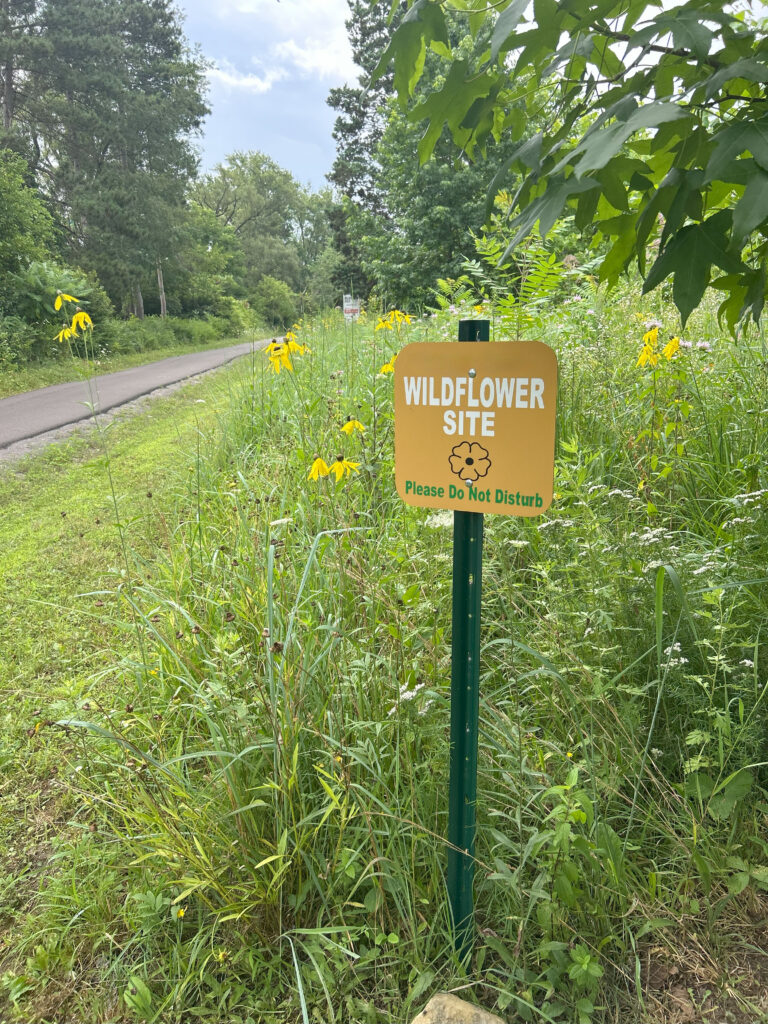Biodiversity, the backbone of healthy ecosystems, is in crisis. From vanishing pollinators to collapsing food webs, the decline is accelerating at a pace that threatens both wildlife and human life. But there’s hope in a growing movement that empowers anyone to be part of the solution.
In this blog, we’ll explore:
- The scale and urgency of today’s biodiversity crisis.
- How Homegrown National Park (HNP) is regenerating habitat nationwide.
- The role Ernst Seeds plays in making action possible.
- Practical steps you can take starting right now to make an impact.
It’s time to see how change can start in your own backyard, balcony, or community space.
The Biodiversity Crisis We Face
In case you haven’t heard, life on Earth is in trouble. Scientists warn that our current biodiversity crisis is an existential problem on par with climate change.
The numbers are sobering:
- Studies estimate that Earth has lost over 50% of its insects.
- 3 billion breeding birds have been lost in North America over the last 50 years.
- Nearly 40% of bee and butterfly species are at risk.
- Pollinators are responsible for 1 in 3 bites of food we eat, making the impact of this decline potentially catastrophic.
The United Nations predicts that up to 1 million species may go extinct in the next 20 years, a die-off so massive that scientists have dubbed it the Sixth Great Extinction.
Why It’s Happening
It’s not that humans set out to kill biodiversity; rather, we have excluded nature from our daily spaces. As our cities and suburbs expanded, we pushed wildlife into isolated parks and preserves, clinging to the false notion that “nature” belongs only in distant wilderness.
Today:
- Only about 12% of U.S. land is protected in parks and refuges, far too little and fragmented to sustain the diversity our growing population needs.
- Roughly 71% of the lower 48 states is privately owned land, dominated by farms, lawns, pavement, and development.
- East of the Mississippi River, that figure rises to over 85% private land.
In converting these vast areas to human use, we have often eliminated native plant communities and the wildlife that depend on them. Lawns alone carpet an area larger than the state of New England in the U.S., yet offer virtually no ecological value. This habitat loss, compounded by pesticide overuse and other factors, has severely disrupted the vital connections between plants and animals that keep ecosystems functioning.
The good news is the path forward doesn’t require waiting for legislation or large-scale interventions. It starts with rethinking how we use the land we already control. That’s the idea at the heart of Homegrown National Park.
A Homegrown Solution
Homegrown National Park (HNP) is a grassroots call-to-action founded by Dr. Doug Tallamy and Michelle Alfandari aimed at regenerating biodiversity one yard, one balcony, and one community at a time. It starts from a simple premise: if every one of us transforms the outdoor spaces under our control–whether a farm, a suburban yard, a city rooftop, or even a humble flower box–into habitat for native plants and wildlife, together we can knit back a national park of biodiversity, spread across millions of pockets of land.
In Tallamy’s words: “Our National Parks, no matter how grand in scale, are too small and separated from one another to preserve (native) species to the levels needed. Thus, the concept for Homegrown National Park, a bottom-up call-to-action to restore habitat where we live and work, and to a lesser extent, where we farm and graze, extending national parks to our yards and communities.”
Mission & Approach
At its core, Homegrown National Park’s mission is “to regenerate biodiversity because all humans need healthy, productive ecosystems to survive.”
Concretely, this means:
- Planting native species that feed and shelter local wildlife.
- Removing invasive plants that disrupt food webs.
- Reducing reliance on pesticides and herbicides.
The beauty of the model is that anyone can participate. From a single native plant in a container to acres of meadow, every contribution counts.
Measuring Impact
HNP makes restoration visible through its Biodiversity Map. Participants register their habitat and acreage, creating a living snapshot of progress. Current totals include:
- Tens of thousands of acres restored.
- Thousands of individuals and organizations participating across all 50 states.
The map is not simply a tool for tracking data, but a tool for inspiring the country. Each new “dot” represents a piece of functional habitat added to a growing, interconnected network.
Big Goals, Bigger Potential
HNP’s first major target is to convert 20 million acres of private land to native habitat, or roughly the size of 10 Yellowstone National Parks combined. Given that U.S. lawns cover 50 million acres, this goal is ambitious but achievable.
By starting small and growing collectively, HNP is proving that millions of tiny acts can add up to a nationwide transformation, and Ernst is helping make that possible.
Seeds of Partnership: Ernst Seeds & HNP
One key to Homegrown National Park’s success has been the support of forward-thinking partners who provide the tools and resources to turn inspiration into action. Ernst Seeds stands out as a crucial ally.
Founded in 1964, Ernst has grown into the largest native seed producer in the eastern United States. Through our Seed Finder Tool, resources, and advocacy, we help both first-time gardeners and experienced land managers identify the right native species or seed mixes for your location, soil type, and project goals. Whether you’re rewilding a city courtyard, converting part of a corporate lawn, or restoring streamside habitat on a farm, Ernst offers a path to get there.
Turning Seeds Into Support for HNP
Ernst supplies the very biodiversity-building blocks that Homegrown National Park is asking people to plant. Our product catalog is specifically designed to support biodiversity: hundreds of species and seed mixes tailored for purposes like pollinator gardens, meadow restoration, wetlands, riparian buffers, reforestation, and more.
Our strategic partnership with HNP creates a sustainable feedback loop: participants get high-quality native seed, HNP gains resources to expand outreach, Ernst gains visibility, and more habitat gets planted.
Natural Allies
The partnership is a win-win model of how businesses and nonprofits can join forces to address an urgent environmental crisis while also supporting each other.
HNP gains a reliable supply chain for native seeds (ensuring that when a new “biodiversity warrior” wants to transform their yard, they can easily find the right native plants to do it). HNP also benefits financially from seed sales and sponsorship, allowing the nonprofit to develop more free educational content, interactive tools, and community programs.
On the other side, Ernst gains new customers from the swelling ranks of HNP enthusiasts, as well as the satisfaction of tangibly furthering its conservation mission.
Six Ways You Can Make an Immediate Impact
The biodiversity crisis can feel overwhelming, but the beauty of Homegrown National Park’s approach is that it starts with simple, tangible actions anyone can take, no matter where you live or how much space you have.
1. Plant Native Species
Even one native tree, shrub, or flower can support dozens of pollinators and other wildlife. Use HNP’s keystone plant guides or Ernst’s Seed Finder Tool to choose species that thrive in your region.
2. Remove Invasive Species
Focus on the worst offenders first: species like Thistle plants, English ivy, Japanese knotweed, or autumn olive, which crowd out native plants and disrupt ecosystems.
3. Shrink Your Lawn
Replace portions of turf grass with wildflower beds, meadow mixes, or native groundcovers that offer food and shelter for wildlife.
4. Create Connectivity
Encourage neighbors, schools, or local organizations to join in. Habitat corridors allow wildlife to move, feed, and reproduce more successfully.
5. Register Your Habitat
Add your restored space to the HNP Biodiversity Map so your contribution becomes part of a growing national network.
6. Leverage Available Resources
From planting guides to seed selection tools, both HNP and Ernst provide expert support to make the process easier.
Inspiration from Above the City Streets
HNP’s community is full of creative success stories, like two residents of a high-rise who transformed their building’s seventh-floor patio into a native plant oasis. Within a year, moths, butterflies, and other pollinators were visiting regularly.
That’s hard proof that every action, no matter the size, moves us closer to HNP’s ambitious goal of restoring 20 million acres of native habitat.
Ernst & Homegrown National Park: Partners in Planting the Future
The biodiversity crisis is daunting, but it’s not insurmountable. As we’ve seen, Homegrown National Park is mobilizing thousands to restore habitat, and Ernst Seeds is providing the native plants and expertise to make it happen. Together, they’re proving that small, local efforts can scale into a nationwide transformation.
The time to plant the future is now. Whether you manage a sprawling property or a single planter, you can be part of this movement.
Learn more about Homegrown National Park and reach out to the experts at Ernst for tailored guidance on selecting the right native species for your project, no matter how big or small.

